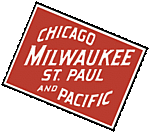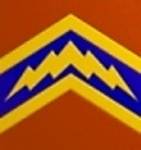Phil,
Here is some info on the Soccer War. Taken from
On WarThe Soccer Wr 1969
By 1968 the López Arellano regime seemed to be in serious trouble. The economic situation was producing growing labor conflicts, political unrest, and even criticism from conservative groups such as Fenagh. Municipal elections were held in March 1968 to the accompaniment of violence and charges of open fraud, producing PNH victories but also fueling public discontent and raising the concern of the United States Embassy. Efforts at opening up a dialogue were made in mid-1968 but had little success. Later in the year a general strike was kept brief by government action that helped break the strike and exiled the leader of the major Caribbean coast labor federation. Unrest continued, however; in the spring of 1969 new strikes broke out among teachers and other groups.
As the political situation deteriorated, the Honduran government and some private groups came increasingly to place blame for the nation's economic problems on the approximately 300,000 undocumented Salvadoran immigrants in Honduras. Fenagh began to associate Salvadoran immigrants with illegal land invasions, and in January 1969, the Honduran government refused to renew the 1967 Bilateral Treaty on Immigration with El Salvador that had been designed to regulate the flow of individuals across their common border. In April INA announced that it would begin to expel from their lands those who had acquired property under agrarian reform without fulfilling the legal requirement that they be Honduran by birth. Attacks were also launched in the media on the impact of Salvadoran immigrant labor on unemployment and wages on the Caribbean coast. By late May, Salvadorans began to stream out of Honduras back to an overpopulated El Salvador.
Tensions continued to mount during June 1969. The soccer teams of the two nations were engaged that month in a three-game elimination match as a preliminary to the World Cup. Disturbances broke out during the first game in Tegucigalpa, but the situation got considerably worse during the second match in San Salvador. Honduran fans were roughed up, the Honduran flag and national anthem were insulted, and the emotions of both nations became considerably agitated. Actions against Salvadoran residents in Honduras, including several vice consuls, became increasingly violent. An unknown number of Salvadorans were killed or brutalized, and tens of thousands began fleeing the country. The press of both nations contributed to a growing climate of near- hysteria, and on June 27, 1969, Honduras broke diplomatic relations with El Salvador.
Early on the morning of July 14, 1969, concerted military action began in what came to be known as the Soccer War. The Salvadoran air force attacked targets inside Honduras and the Salvadoran army launched major offensives along the main road connecting the two nations and against the Honduran islands in the Golfo de Fonseca. At first, the Salvadorans made fairly rapid progress. By the evening of July 15, the Salvadoran army, which was considerably larger and better equipped than its Honduran opponent, pushed the Honduran army back over eight kilometers and captured the departmental capital of Nueva Ocotepeque. Thereafter, the attack bogged down, and the Salvadorans began to experience fuel and ammunition shortages. A major reason for the fuel shortage was the action of the Honduran air force, which--in addition to largely destroying the smaller Salvadoran air force--had severely damaged El Salvador's oil storage facilities.
The day after the fighting had begun, the OAS met in an urgent session and called for an immediate cease-fire and a withdrawal of El Salvador's forces from Honduras. El Salvador resisted the pressures from the OAS for several days, demanding that Honduras first agree to pay reparations for the attacks on Salvadoran citizens and guarantee the safety of those Salvadorans remaining in Honduras. A cease-fire was arranged on the night of July 18; it took full effect only on July 20. El Salvador continued until July 29 to resist pressures to withdraw its troops. Then a combination of pressures led El Salvador to agree to a withdrawal in the first days of August. Those persuasive pressures included the possibility of OAS economic sanctions against El Salvador and the dispatch of OAS observers to Honduras to oversee the security of Salvadorans remaining in that country. The actual war had lasted just over four days, but it would take more than a decade to arrive at a final peace settlement.
The war produced only losses for both sides. Between 60,000 and 130,000 Salvadorans had been forcibly expelled or had fled from Honduras, producing serious economic disruption in some areas. Trade between the two nations had been totally disrupted and the border closed, damaging the economies of both nations and threatening the future of the Central American Common Market (CACM). Up to 2,000 people, the majority Honduran civilians, had been killed, and thousands of other Hondurans in the border area had been made homeless. Airline service between the two nations was also disrupted for over a decade.
After the war, public support for the military plummeted. Although the air force had performed well, the army had not. Criticism of the army was not limited to the public; junior officers were often vocal in their criticism of superiors, and a rift developed between junior and senior officers.
The war, however, led to a new sense of Honduran nationalism and national pride. Tens of thousands of Honduran workers and peasants had gone to the government to beg for arms to defend their nation. Local defense committees had sprung up, with thousands of ordinary citizens, often armed only with machetes, taking over local security duties. This response to the fighting made a strong impression on a sector of the officer corps and contributed to an increased concern over national development and social welfare among the armed forces
Like many other conflicts in Salvadoran history, the 1969 war with Honduras, sometimes referred to as the Football War, was rooted in economic disparity. El Salvador is a small country with a large and rapidly growing population and a severely limited amount of available land. Honduras is a larger country with a smaller population and a less-developed economy. By 1969 some 300,000 Salvadorans had drifted over the border and taken up residence in more sparsely populated Honduras. The vast majority of these Salvadorans were squatters, technically illegal immigrants whose sole claim to the land they worked was their physical presence on it. For Hondurans, the land itself was not so much the issue. What rankled them was the image of being pushed and potentially enveloped by the Salvadorans. Throughout the 1960s, the mechanisms of the Central American Common Market worked to the advantage of the more developed economies of the region, particularly those of Guatemala and El Salvador. The growth of Salvadoran-owned businesses in Honduras-- shoe stores were the most visible of these enterprises-- underscored for Hondurans the relative economic disparity between the two countries. The issue of the Salvadoran squatters, despite its lack of real economic significance, became a nationalistic sore point for Honduras, a question of adding territorial insult to perceived economic injury.
The border situation became increasingly tense during the two years preceding the outbreak of hostilities. In early 1969, the regime of Honduran president Oswaldo Lopez Arellano (1963-71) invoked a dormant agrarian reform law as a pretext to evict Salvadoran squatters and expel them from the country. The Lopez government was experiencing economic and political difficulties and saw the Salvadorans as convenient scapegoats. Stories and images of displaced refugees filled the Salvadoran press and the airwaves. Tales of violent displacement by the Honduran military began to circulate throughout El Salvador. Tension between the two countries continued to build. The incident that provoked active hostilities--and lent the conflict its popular designation as the Football War--took place in San Salvador in June 1969. During and after a soccer match between the Honduran and Salvadoran national teams, the Honduran team members were vilified and harassed by Salvadoran fans. The reportage of this incident brought matters to a fever pitch.
Beyond national pride and jingoism--which was expressed by Duarte and the PDC with a fervor equal to that of Sanchez and the PCN--the Salvadorans had other motivations for launching a military strike against Honduras on July 14, 1969. The influx of displaced Salvadoran squatters was placing a burden on services and threatening to provoke widespread social unrest. The situation was undermining the political support of the Sanchez government; action against Honduras became the most expedient option to turn this situation around. Although war with Honduras almost certainly would lead to the breakdown of the CACM, the Salvadorans were willing to pay that price. In their estimation, the CACM was already close to a breakdown over the issues of comparative advantage; war with Honduras would only hasten that outcome.
The actual fighting was brief. Despite early Salvadoran air strikes, the Hondurans eventually dominated in that area, destroying most of the Salvadoran Air Force. The Salvadoran Army, however, clearly bested the Hondurans on the ground. The Salvadorans pushed rapidly into Honduran territory before fuel and ammunition shortages and diplomatic efforts by representatives of the Organization of American States (OAS) curtailed their progress. As many as 2,000 people, mainly civilians, were killed in the action.
The war had a number of immediate repercussions. The Salvadorans had expended large quantities of ordnance, necessitating heavy military expenditures to replenish depleted stocks. Trade between the two countries was disrupted completely, and the CACM ceased to function as anything more than a paper entity. El Salvador lost the economic "safety valve" formerly provided by illegal emigration to Honduras; land-based pressures again began to build. Although the vast majority of Salvadorans, including all the legal political parties, had united in support of the war, this unity did not last long.
Ross



































